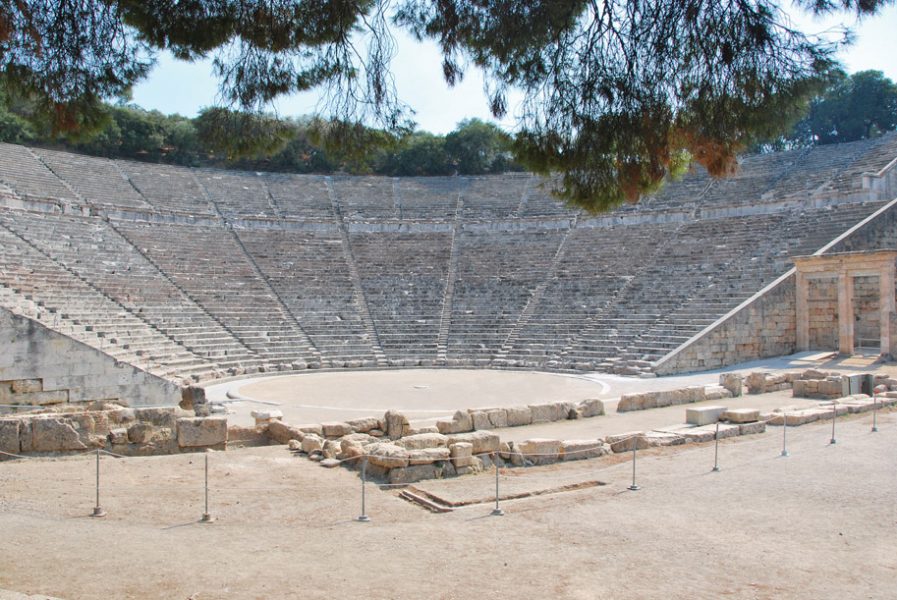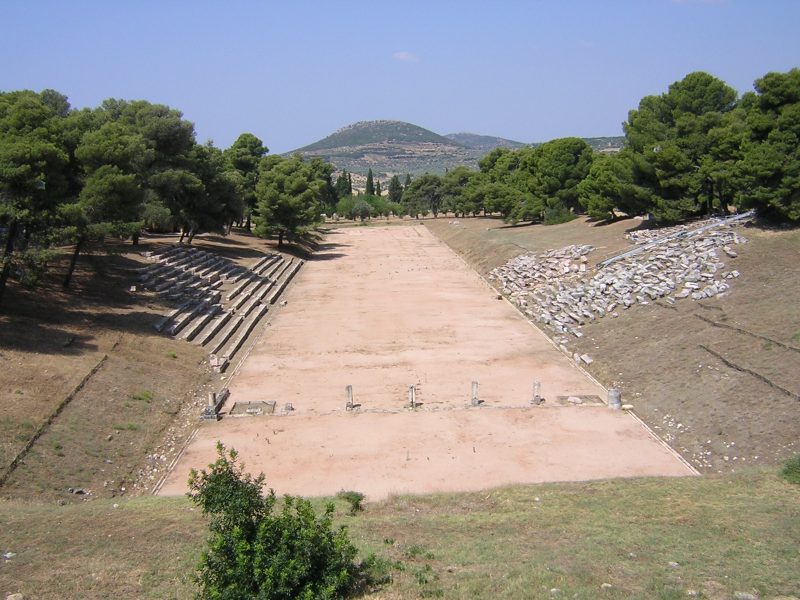
The Ancient Theatre of Epidaurus
The Asklipio of Epidauros is one of those ancient places that has obtained universal fame and respect. It functioned as both a religious and political centre of the city state of ancient Epidauros a city of rather small importance which lived under the shadow of powerful centres of that time like Corinth, Sparta and Athens.
Asklipio of Epidauros was considered the birthplace of medicine which was practised as power and was given to humans as knowledge of God. The rituals of worships in Epidauros date back to the 6th century BC. On the hill Kynortio, beside the theatre, a sanctuary was created – an unusually large construction for that time. The water which gushed from the springs played a crucial role in the worship rituals. The catharsis with water and the communion were considered to ensure a life of health and happiness.
After the fall of the Mycenean world the sanctuary came back to life around 800 BC during the period that city-states were created. Worship was now under the protection of the God Apollo. According to the legend, on Mount Kynortio the king of Epidauros, Malos founded Apollo’s temple Maleata close to where his grand-daughter Koronis, gave birth to Apollo’s son – Asklipios. With the development of the urban character of ancient cities from the 6th century BC, human health and personal happiness gained greater importance in peoples’ lives. The fame of Epidauros’ sanctuary gradually increased and so did the number of pilgrims. This is the reason why the sanctuary had to be transferred in the middle of the 6th century to the spacious valley, approximately 1000 meters northwest of the old centre of worship – the world-famous sanctuary of Asklipios Water continued to be worshipped and was transported to the new place from the most ancient mountainous spring via a large aqueduct dug in the ground which appeared as a sacred well.
In this new place, Apollo’s worship began to slowly fade while the worship of his son, Asklipios strengthened. The great era of the sanctuary of Epidauros was during the 3rd and 4th centuries BC. At that time, the treasures that the city gathered in the temple allowed its systematic and monumental development : the temple of Asklipios, the Cyclic Tholos, Avato, the Gymnasium, Katagogio, the sanctuary’s ornament and the ancient theatre were some of the most important structures of the sanctuary. In the 1st century BC, during the time of the Romans the sanctuary suffered important damages. In the 2nd century AD, the sanctuary flourished once again and the worship continued until the official restriction of ancient worships in 426 AD.Excavations were made at the end of the previous century by the archaeologist Panagi Kavvadia. During 1954 -1963 the theatre was restored by A. Orlando, since 1984 the working team continued to look after the preservation and conservation of Epidauros’ monuments under the supervision of archaeologists Labrinoudaki, Parlama and Spathari.
The excavations, which started in 1880 and were completed with restorations in the 20th century, revealed the most consistent world-wide, perfect sample of ancient Greek theatre. It has 55 rows of seats – which are divided in 12 tiers at the lower landing and 22 on the upper one – with a capacity of more than 20,000 viewers. From its stage room proscenium, only the foundations have survived. Its orchestra gives us a wonderful picture of the cyclic – 20 meters diameter- orchestra of authentic Greek rhythm. The hollow rests on a natural hillside and is positioned northwest, almost a unique orientation to ancient theatrical rules.











